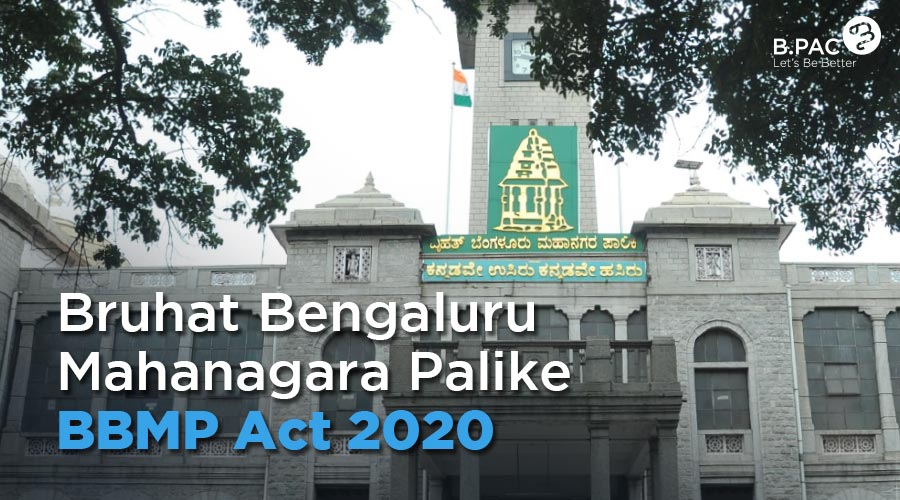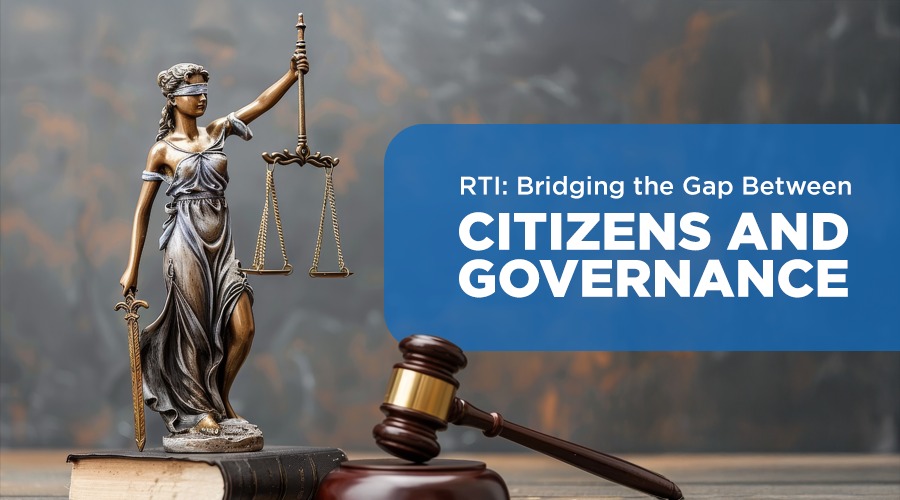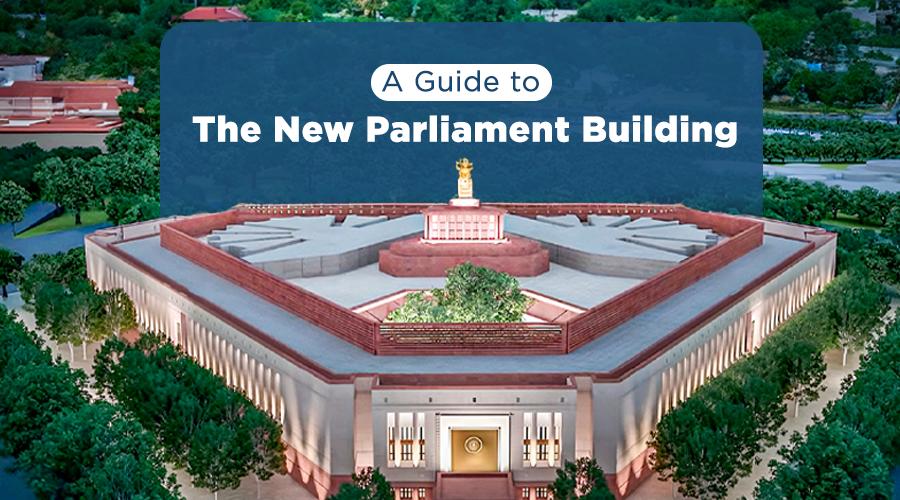The Constitution of India has made detailed provisions for ensuring protection of democracy in Parliament and in State Legislatures. Through the 74th amendment, the urban local bodies have a framework to operate under.
This article explores the previous KMC act of 1974 under which BBMP was functioning and the current BBMP Act 2020.
But first, let us understand the 74th Amendment of the Constitution and what it means
The Bill as reported by the Joint Parliamentary Committee was taken up for consideration and passed by the Lok Sabha on 22nd December, 1992 and by the Rajya Sabha on 23rd December, 1992 and it received the assent of President on 20th April, 1993. It was published in the Government Gazette on 20th April, 1993 as the “Constitution (Seventy Fourth Amendment) Act, 1992”.
Local Government, that is to say, the constitution and powers of municipal corporations, improvement trusts, district boards, mining settlement authorities and other local authorities for the purpose of local self-Government or village administration.
The Constitution (Seventy Fourth Amendment) Act, 1992 – main provisions introduced by the above Act are as under:-
(i) Constitution of Municipalities- It provides for constitution of 3 types of municipalities depending upon the size and area namely
(ii) Nagar Panchayat for an area in transition from rural to urban area; (ii) Municipal Council for smaller urban area; and
(iii) Municipal Corporation for larger urban areas. Demographic and other conditions, which are determining factors for constituting a particular type of municipality differ a great deal from one State to another.
Now, lets look into the History of BBMP starting from 1949 to till date
Bangalore became a corporation in 1949 and the rest of the cities of Karnataka were municipalities. Bangalore City Corporation Act [1949-1976] was the legislation governing the city.
The Karnataka Municipalities Act [KMC] was introduced in 1976 and expanded the mandate to all other cities in the state.
Bangalore Mahanagara Palike (BMP) had 3 zones and 100 wards, 15 MLA constituencies
Now, Bruhat Bangalore Mahanagara Palike (BBMP) area is an amalgamation of 7 CMCs, 1 TMC surrounding the erstwhile Bangalore Mahanagara Palike (BMP) and 110 intervening villages. The geographical area of the BBMP with all the newly added areas is 709.53 Sq.Kms. The composition of BMP and other constituent bodies of BBMP in terms of wards and population as per 2001 Census.

Introduction to Bruth Bengaluru Mahanagara Palike (BBMP) Act 2020
An Act to provide for an independent legislation for the purposes of improving decentralization, integration of public participation at various levels of municipal governance and to ensure efficient decision making by the Bruhat Bengaluru Mahanagara Palike.
Whereas, the City of Bengaluru is a major center of economic activity with a large and growing population with seven hundred and fourteen square kilometers of area under the jurisdiction of the Bruhat Bengaluru Mahanagara Palike.
Whereas, the Bruhat Bengaluru Mahanagara Palike was established and governed under the provisions of the Karnataka Municipal Corporations Act, 1976 (Karnataka Act 14 of 1977).
Whereas, the provisions of the Karnataka Municipal Corporations Act, 1976 (Karnataka Act 14 of 1977) are inadequate in administrative and structural matters to govern Bengaluru as it provides for limited flexibility and is a common legislation catering to nine smaller Municipal Corporations in the State of Karnataka.
On 10 December 2020, the Karnataka Assembly passed a new municipal bill to help better govern the city through BBMP.
BBMP composition and Functions
- 243 councilors
- 28 MLAs,
- 8 MLCs
- 12 Rajya Sabha MPs
- 4 Lok Sabha MPs
- 20 nominated members (10% of elected members)
Administrative Section:
Overview of Administrative Setup in BBMP
Under BBMP Act 2020, the following changes have been made:
Corporation Authorities who carry out the provisions of the Act:
- the Bruhat Bengaluru Mahanagara Palike (BBMP)
- the Mayor
- the Chief Commissioner
- the Zonal Commissioner
- the Zonal Committees
- the Standing Committees
- the Ward Committees
- Area Sabhas
Functionaries:
Mayor, Deputy Mayor
The Members of the Corporation in the first meeting of the Corporation elect one of its Members to be the Mayor and another member to be the Deputy Mayor of the Corporation
The Mayor or the Deputy Mayor shall hold office for a period of thirty months from the date of his election and continue in office till a successor is elected. for the persons belonging to the Scheduled Castes, Scheduled Tribes and women by rotation on occurrence of vacancy.
The Mayor presides over every meeting of the corporation.
Chief Commissioner
The Chief Commissioner is appointed by the Government in consultation with the Mayor and he shall not be a member of the Corporation.
The Chief Commissioner is an officer not below the rank of the Principal Secretary to Government.
The Chief Commissioner shall hold office for a period of two years subject to the pleasure of the Government and may be transferred by the Government, as may be required for the effective administration of the Corporation
- Term of office for Councillors
(i) directly elected at a general election shall be five years;
(ii) nominated by the Government under clause
The term of office of the Councilors shall commence on the date appointed for the first meeting of the corporation. If any casual vacancy occurs it shall be filled, as soon as may be, by the election of a person.
Standing Committees for the Corporation:
(a) Standing Committee for taxation and finance and appeals
(b) Standing Committee for public health, solid waste and disaster management.
(c) Standing Committee for establishment and administrative reforms;
(d) Standing Committee for markets.
(e) Standing Committee for Ward level Public works, town planning and infrastructure
(f) Standing Committee for Education and social justice
(g) Standing Committee for Horticulture
(h) Standing Committee for Audit and Accounts
MAYOR, DEPUTY MAYOR
- The Members of the Corporation in the first meeting of the Corporation elect one of its Members to be the Mayor and another member to be the Deputy Mayor of the Corporation
- The Mayor or the Deputy Mayor shall hold office for a period of thirty months from the date of his election and continue in office till a successor is elected. for the persons belonging to the Scheduled Castes, Scheduled Tribes and women by rotation on occurrence of vacancy.
- The Mayor presides over every meeting of the corporation.
Chief Commissioner.
- The Chief Commissioner is appointed by the Government in consultation with the Mayor and he shall not be a member of the Corporation.
- The Chief Commissioner is an officer not below the rank of the Principal Secretary to Government.
- The Chief Commissioner shall hold office for a period of two years subject to the pleasure of the Government and may be transferred by the Government, as may be required for the effective administration of the Corporation.
Administrative Zones :
Based on the new act, the number of zones created by the Corporation shall not exceed fifteen.
Division of the Corporation into Zones- The Government upon consultation with the Corporation, issues a notification dividing its area into various Zones for administrative purposes.
There are 8 BBMP zones namely:
Zonal Committees.
1)Each Zone of a Corporation shall have a Zonal Committee consisting of the following members namely:-
(a) The Chairperson of the Zonal Committee shall be a councilor representing one of the wards within the Zone who shall be elected among councilors of the any such manner as may be prescribed.
(b) All the Councilors elected from the wards within the Zone;
(c) An Engineer who is incharge of the particular zone- Ex-officio Member;
(d) one person who is an expert in solid waste management nominated by Government; and
(e) one person who is an expert in urban governance nominated by the Government.
(2) The term of the Chairperson of the Zonal Committee shall be one year.
(3) A councilor who has become Chairperson of the zonal committee shall not be eligible to become Chairperson for the second term.
(4) Officers of the Bengaluru Development Authority and the Bengaluru Water Supply and Sewerage Board who are responsible for the maintenance of services within the concerned zone shall be ex-officio members of the Zonal Committee. Police Officers including traffic incharge of the ward, BESCOM Officer in charge of the Zone shall attend the meetings of the Zonal Committees as may be required but shall not have the right to vote.
(5) The Zonal Commissioner shall be coordinator of the Zonal Committee.
Revenue
Taxes:
(1) Subject to general and specific orders of the Government, the corporation may impose the following taxes at rates not exceeding those specified in the Act,-
(a) A tax on buildings or vacant land or both situated in the jurisdiction of the corporation.
(b) A tax on profession, trades, callings and employment.
(c) A tax on entertainment and amusements.
(d) A duty on certain transfers of property in the form of additional stamp duty.
(e) Any other taxes which may be assigned by law for the assessment and collection by the Corporation.
(2) The corporation shall, by way of resolution passed at a general meeting of the council, determine the classes of person or properties or entities which shall be assessed for tax and the rate of such tax.
(3) The Corporation may, at any time for sufficient reason, suspend, modify or abolish any existing tax:
LICENSES AND FEES
Granting of license.-(1)The Zonal Commissioner shall have the power to grant license in matters pertaining to the following subjects:
(a) Establishment and operation of Markets either wholesale or retail;
(b) Establishment and operation of Trade Establishments;
(c) Establishment and operation of Slaughterhouses;
(d) Establishment and operation of Restaurants;
(e) Establishment and operation of Industries;
(f) Establishment and operation of Commercial undertakings;
(g) Establishment and operation of Corporate Offices;
(h) Establishment of Service apartments, paying guest accommodation;
(i) Establishment and operation of Shared office and living spaces;
(j) Establishment and operation of Hospitals and nursing homes;
(k) Establishment and operation of Rest houses;
(l) Establishment and operation of Theatres, fairs, circuses and places of public amusement;
(m) Establishment and operation of Milk Trade;
(n) Keeping of animals and birds;
(o) Establishment of Stables, cattle sheds and cow houses;
(p) Providing for Places for burial of the dead;
(q) Establishment of Food trucks or any cart stands;
(r) Erection of Advertisements in public places
BBMP Departments
- Administration
- Health
- Engineering
- Education
- Horticulture
- Animal Husbandry
- Advertisement
- Revenue
- Town Planning
- Forestry
- Welfare
- Markets
- Legal
- Vigilance cell
- Estates
Citizen Participation through Ward committees and Area Sabhas
Composition of Ward Committees
Composition of the Ward Committee.- (1) There shall be a Ward Committee for each ward in the Corporation.
(2) The Ward Committee shall consist of the following, namely:-
(a) the Councillor of the Corporation representing the Ward, shall be the
Chairperson of the Ward Committee;
(b) ten other members to be nominated by the Corporation; out of which, there
shall be,-
(i) at least two members belonging to the Scheduled Castes and the Scheduled
Tribes;
(ii) at least three women members; and
(iii) at least two members representing residents Associations, whatever name called satisfying all conditions mentioned below, namely:-
(a) its registered office shall be located within the jurisdiction of that ward;
(b) it shall represent majority of residents, or civic groups, or commercial groups or industrial groups;
(c) it shall have been actively engaged in its activities for not less than three years;
(d) it shall be a registered Association by whatever name called, comprising of individuals who serve in a fiduciary capacity;
Provided that, half of the persons to be nominated to the Ward Committee shall be women and at least one fourth of the members nominated to the Ward Committee shall belong to Scheduled Castes and/ or Scheduled Tribes.
Ward committee meetings
- Meetings at least once in a month.
•Councilor is Chairperson - Decisions normally by the majority of nominated members
•Provided that the Chairperson may exercise a veto over any decision by giving reasons in writing.
•The decision of the Chairperson shall be final and binding
Functions and duties of Ward
Rule 3 – Ward committee shall recommend to the corporation for disciplinary action on those officers who fail to carry out resolutions of the Ward Committee.
Rule 5 – If chairman fails to call a meeting in a month, one-third of the ward committee members can requisition the chairman in writing to convene a meeting calling attention to the fact that a monthly meeting is due or specifying the purpose for which a meeting is necessary
Rule 8 – Establishment of a Disaster Management Cell at ward level
Area Sabhas
Constitution of Area Sabhas.- (1) Each ward shall be divided into such number of areas and there shall be an Area Sabha for each such area.
(2) All persons who are registered as voters in an area shall be members of that Area Sabha.
Representatives of the Area Sabha.-(1) There shall be an Area Sabha Representative for each area to be nominated by the Zonal Committees from the representatives of the civil society in the manner as may be prescribed.
(2) The qualifications and disqualifications prescribed for getting elected as member of Corporation and for holding the office as Member of Corporation under the relevant provisions of the Act shall apply mutatis mutandis for the representative of the Area Sabha.
(3) The Area Sabha representative shall be a member of that Area Sabha.
(4) The term of the representative of the Area Sabha shall be ordinarily co-terminus with that of the Corporation.
At this juncture in our city’s development story, along with necessary changes being made at the legislative, administrative and governmental levels, the onus is on us as citizens to start participating effectively through our constitutionally guaranteed rights.
While we have so many more aspirational changes required to our governance of the city, they can be reached only through participation right now, armed with information.





